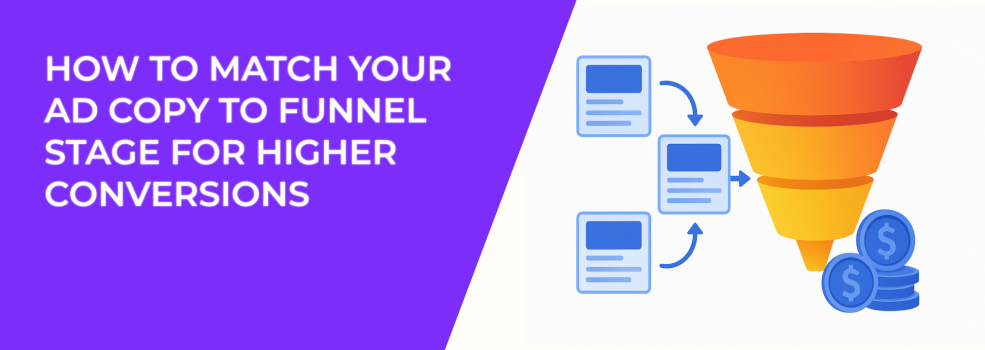When people talk about “funnel alignment,” it can sound like vague marketing jargon. But in practice, aligning your ad copy with each stage of the funnel is one of the clearest ways to lift conversions without throwing more money at campaigns. The trick is knowing what your audience needs to hear when they’re at the top, middle, or bottom of that funnel — and making sure your words reflect that.
Why Funnel Stages Matter for Ad Copy
Every prospect is on a journey. Some are just learning that your category exists, others are comparing you against competitors, and a smaller group is almost ready to make a decision. If you hit all of them with the same ad copy, you’ll either overwhelm the curious or bore the ready-to-buy.
Google snippets and Facebook previews thrive on relevance. When the copy feels like it speaks directly to someone’s current mindset, they’re far more likely to click, engage, and convert.
So how do you actually map your ad copy to funnel stages? Let’s walk through it step by step.
Top of Funnel: Curiosity and Education
At the awareness stage, your audience isn’t searching for your brand. They’re exploring ideas, looking for inspiration, or just scrolling casually. This is where your copy should spark curiosity.
Instead of pushing a sale, focus on:
-
Asking questions that highlight a pain point.
-
Sharing a surprising insight or statistic.
-
Promising a quick win or helpful tip.
For example, imagine running ads for a new fitness app. Instead of saying “Download our app today,” your top-funnel copy might ask, “Ever wonder why most workouts fail after 3 weeks?” That sparks thought. It doesn’t pressure, but it nudges.
The goal here is simple: make them pause, click, and learn more.
At the awareness stage, your copy has to spark attention quickly — the psychology of Facebook ads shows just how powerful the right hook can be.
Middle of Funnel: Building Trust and Relevance
By now, users know the problem exists. Some may even know your brand. What they need is reassurance — proof that you understand their situation and that your solution works.
This is where your ad copy should:
-
Highlight social proof (reviews, testimonials, case studies).
-
Compare solutions without being heavy-handed.
-
Show how your product fits seamlessly into their life or business.
Let’s go back to the fitness app example. Mid-funnel copy could say, “Join 20,000 people who built a consistent routine with just 15 minutes a day.” It frames the offer with credibility and relatability.
Notice the difference? You’re not simply introducing a problem anymore — you’re giving them a reason to believe your product is the answer.
Mid-funnel audiences often need reassurance, which is why adding reviews or testimonials — a form of social proof — works so well.
Bottom of Funnel: Confidence and Action
At this stage, your prospects are warmed up. They’re weighing your offer against other options. Your job? Remove friction and make the next step irresistible.
Effective bottom-funnel copy often includes:
-
A clear call to action.
-
Guarantees or risk-reducers (“Free trial,” “Cancel anytime”).
-
Urgency or exclusivity (but without sounding desperate).
Our fitness app ad could say, “Start your free 14-day trial today. Cancel anytime.” Short, direct, and designed to tip them over the edge.
Think of it this way: top-funnel copy earns attention, mid-funnel builds trust, and bottom-funnel closes with confidence.
When you’re closing the deal, Facebook retargeting often makes the difference, reminding warm prospects of the exact offer they were considering.
Putting It All Together
Here’s where most advertisers slip — they try to shortcut the funnel. But copy that matches each stage creates a smoother path from first impression to final click.
If you’re planning your next campaign, try mapping your ads like this:
-
One set focused only on curiosity (awareness).
-
Another centered around credibility and proof (consideration).
-
A final group designed to drive immediate action (conversion).
Then test, refine, and watch how your cost per lead or sale drops.
Final Thoughts
Matching ad copy to funnel stage isn’t just a “nice-to-have.” It’s a practical way to guide people from stranger to customer with fewer wasted impressions. And when your words align with their mindset, you’re not just running ads — you’re running ads that work.

